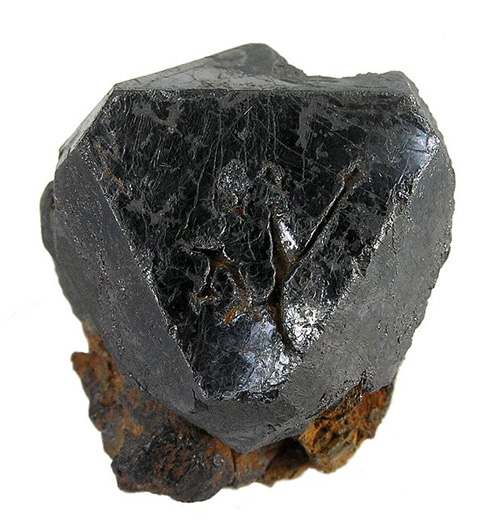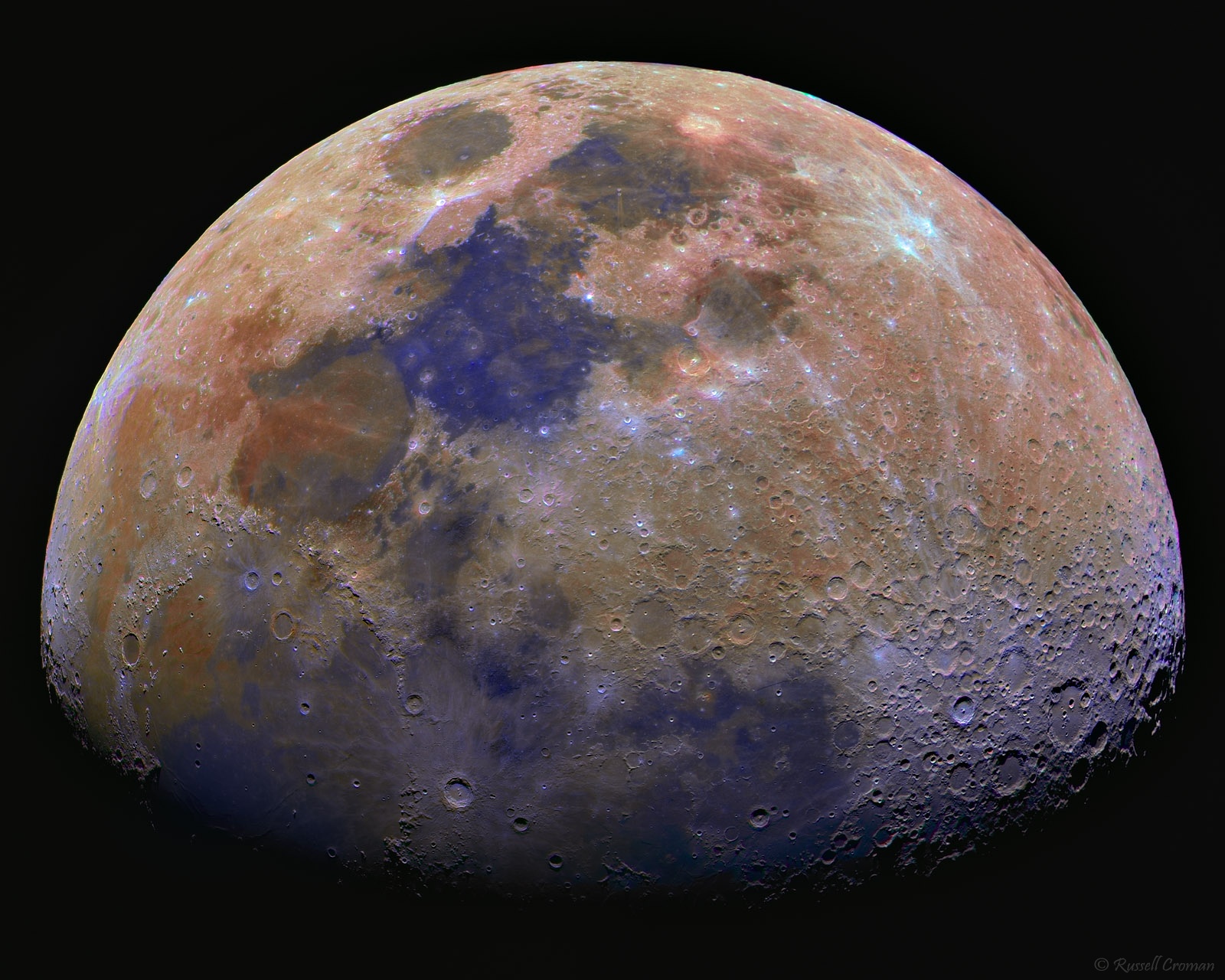 |
Here is a list and some description of the all the things that I learned about the Moon from the talk. I hope you learn something too.
- The temperature of the Moon at the equator ranges from -170C to 130C due to the fact that the Moon has no atmosphere. (I can't type the degree sign in Blogger)
- The average density of the Moon's crust is 3 g/cm^3 as opposed to Earth which is 5.5 g/cm^3. The reason for this is that the Moon has much less iron in its crust than the Earth
- 380kg of Moon rock have been brought back to Earth.
- The mineralogical composition of the Moon is similar to Earth's mantle.
- Oxygen isotope ratios in lunar minerals are the same as they are on Earth.
- There are several hypotheses that exist for the creation of the Moon.
- The first is the impact model which states that the Moon was created when a giant meteorite, about the size of Mars collided with the Earth and broke a piece of it off which then became the Moon. This is the most widely accepted theory.
- The second is the capture hypothesis which states the gravity of the Earth sucked the Moon into orbit around it. This theory is not generally accepted since the composistion of the Moon and the Earth are so similar which would not be the case unless the Moon came from the Earth.
- The final theory, which is brand new, is called the fission hypothesis. It states that the the great amounts of heat generated by radioactive decay on the early Earth caused some melting. This then led to some of the molten Earth being spun off from the equator and then coalescing to form the Moon. This theory also proposes that the early Earth was spinning much faster in the past than today. From what I have heard the theory has met with mixed reviews, but I don't know the details very well.
- The Moon has quite varied topography.
 |
| Map of lunar topography. White and red are very high. |
- The lowlands of the moon, particularly in the bottoms of craters tend to be composed of the extrusive igneous rock basalt.
- There is water on the lunar surface in the form of ice that is buried beneath a very thin layer of "soil". Some minerals also contain up to 46 ppm water.
- One of the minerals which make up a small fraction of the basalt that is common on the lunar lowlands is ilmenite (FeTiO3), which is an iron titanium oxide.
 |
| Ilmenite crystal, Froland, Aust-Agder, Norway |
- Originally the molten Moon formed a plagioclase feldspar crust due to magma differentiation. The moon was then heavily bombarded by meteorites that made it look like swiss cheese.
- Radioactive decay caused melting of the Moon's mantle and the filling of the craters by lava, which then cooled to form basalt.
OK, so those are the cool things about the Moon that I recently learned. I hope that by posting this a few of you learned something cool about the Moon as well. Feel free to comment below on which of my facts you thought was the most interesting or another crazy lunar fact that I didn't mention.
Matt
- Radioactive decay caused melting of the Moon's mantle and the filling of the craters by lava, which then cooled to form basalt.
OK, so those are the cool things about the Moon that I recently learned. I hope that by posting this a few of you learned something cool about the Moon as well. Feel free to comment below on which of my facts you thought was the most interesting or another crazy lunar fact that I didn't mention.
Matt
 |
| This is a pretty awesome photo of the Moon. |
a couple of problems:
ReplyDeleteYour numbers for the densities of the Earth's and the Moon's crust seem to be way way off. Googleing around, I get:
o The Moon's crust is mostly plagioclase, whose sp. gr. is ~2.7g/cc
o "The best fit crustal density [for the far side] was found to be 2950±50 kg/m3... For the nearside region, ...the crustal density was constrained to be 2900±100 kg/m3." ( - http://meetings.copernicus.org/epsc2010/abstracts/EPSC2010-578.pdf)
o "Estimates of average density for the upper crust range between 2.69 and 2.74 g/cm3" ( - http://en.wikipedia.org/wiki/Crust_(geology))
Second, my understanding is that the fission theory of the Moon's origin ... was silly to start with, and has been thoroughly discredited. I'm surprised that the speaker mentioned it - or the 2nd one, for that matter.
Your point is well taken! I suspect that the 0.3 I copied down was actually just a typo in the presentation and was meant to be a 3.0, which makes much more sense given that the Moon is mainly anorthosite. I definitely agree that the fission theory is pretty far-fetched. It is fun to think about though!
DeleteI'll add a couple of points too. (My interest is astrobiology, and the Moon tells us of the Earth-Moon system formation.)
ReplyDelete- Agreed on the fission hypothesis. But note that its origin is quite old, proposed by George Darwin 1898 (son of Charles), so it is "returning" of sorts. It just didn't take off until later.
This tie in with continental drift theory of the time may be of historical interest to geologists.
- Variants of impact model has also posed a Trojan impactor (see the previous link). Mainly, I think, because the collisional velocity comes out so low in some models that an independent impactor seems unlikely: ~ 4 km/s against Earth orbital velocity of ~ 30 km/s.
A body that has aggregated as the Earth at the same orbit parameters as Earth could very well have roughly the same composition, I take it.
- What about the recent claim that the Earth is not so well sorted out? Some find in Russia made the rounds a couple of weeks ago, suggesting that the Earth mantle may well have individual "chunks".
Then the recent and neat correspondence of Ti isotopes ratios (and maybe even the earlier several O ratios) seems odd instead.
- FWIW, I use degC for clarity. Not that the confusion with coulomb for electric charge often arises due to differences in context.
But wouldn't K be more useful here anyway? And shorter, it is absolute so no "degrees".
Hi Torbjörn,
DeleteThanks for your fantastic comment. It adds a lot to the discussion and I am glad that an expert on the subject has taken the time to add to the post. Also, great suggestion about how to write degC in blogger!
Wow thku matt i learnt alot...im a kiwi,lives in Western Australia...we see alot of space junk over the years...im using a friends telescope amazing the moon...thanks again xx
ReplyDelete